2019 Aston Martin Vantage Review

While handing me a plate of pan-fried fungi, the mustached, silver-haired proprietor of the Portuguese eatery we patronized for lunch said to me with a certain pride in his authoritative but subdued voice, “You have to write that Aston Martin brought you to a restaurant with the best mushrooms in the world.” I wouldn’t have taken him up on this editorial suggestion if he weren’t right.
Perhaps I was merely experiencing endorphin overload from a morning spent clipping apexes and storming up mountain roads in this British brand’s latest two-door, two-seat lust-machine, the Vantage, but damn if those weren’t mind-blowing ‘shrooms (in the culinary, not recreational sense), as was the ostensibly local chorizo, salty, fatty and crisp.
Back on track, this is obviously not a restaurant review, rather a look at Aston Martin’s newest sports car, which on both public roads and closed circuits proved to be every bit as delectable – and memorable – as that midday meal I so enjoyed.
FAST FACTS
| Engine: | 4.0-liter twin-turbocharged V8 |
| Output: | 503 brake horsepower, 505 foot-pounds of torque |
| Transmission: | Eight-speed automatic |
| U.S. Fuel Economy (MPG): | Not yet rated |
| CAN Fuel Economy (L/100 km): | Not yet rated |
| U.S. Estimated Base Price: | $150,000 |
| CAN Estimated Base Price: | $173,000 |
High-Performance Heritage
Catapulting this purebred coupe to the horizon and beyond is a 4.0-liter V8 assembled by the folks at Mercedes-AMG, the fruit of a deep-rooted corporate partnership. With twin turbochargers multiplying atmosphere, it delivers a stout 503 brake horsepower and 505 foot-pounds of torque. In comparison, this 2019 model has roughly four times as many ponies in its stable as the very first Aston Martin Vantage.
Reaching back some six decades, this nameplate debuted in 1951 when it was applied to a high-performance version of the DB2. By standards of the day, that car had an impressive 125 horsepower on tap, a healthy increase of 20 over the regular model, though that output figure is dwarfed by even the most bargain-basement commuter cars available today, a clear illustration of just how far things have come in the automotive world.
SEE ALSO: 2019 Aston Martin DB11 Volante Review
Spun by carbon-fiber driveshaft encased in an aluminum torque tube is a rear-mounted, ZF-sourced eight-speed automatic transmission that helps deliver shocking straight-line speed. The new Vantage can reach 60 miles an hour is around 3.5 seconds and finally runs out of breath at a lofty 195 miles an hour (314 km/h). Impressive figures for something with a dry weight of about 3,400 pounds (1,530 kilograms).
For true enthusiasts, a seven-speed manual gearbox will be available in the future, though there are no plans to offer it with the firm’s phenomenal V12, even though it will fit under the hood.
A True Predator
“Predatory” is a term used in Aston Martin’s press materials to describe Vantage and it’s the perfect descriptor for this car. It’s assertively styled, drawing inspiration from the company’s track-only Vulcan, yet still tasteful from every angle, even if it’s not quite as breathtakingly gorgeous as the DB11. Reinforcing this look are slim-line LED lamps both front and rear.
Not surprisingly, aerodynamic performance was a key attribute of this vehicle’s design. The front splitter directs air underneath the body and limits turbulence, fender vents help reduce air pressure in the wheel wells, while a kicked-up deck lid provides downforce at speed. Minimal overhangs bring everything together along with standard 20-inch wheels. Forged rims of the same diameter are optional.
This visual aggression continues inside, where the dashboard is angular and slightly pumped up, with its center stack bulging outward like an exercised bicep under a tightly stretched T-shirt sleeve. Beautiful stitched leather is applied to practically every surface, which in my tester was offset by matte-finished carbon fiber. The Vantage’s interior is a happy place, though a few minor issues detract from the overall experience. The air vents, for instance, look and feel a little low-rent. As with the DB11, forward visibility is slightly compromised by large A-pillars. I also wish the visors pivoted to the side for greater protection from the sun’s glare.
The two bucket seats are supportive without being rock hard; there’s also plenty of room for the driver and front passenger, thanks to Aston Martin’s new aluminum-intensive architecture, the foundation of its future vehicle portfolio. There’s also surprising storage space in this car since there’s no accommodation for rear passengers. Luggage capacity clocks in at 12.4 cubic feet (350 liters), way more than you might expect.
Ready for Any Road
For the most part, Portugal’s roads, at least in the south, are all but free of cracks, potholes, frost-heaves, and other defects, however, their highways are gritter than a gravel pit, which caused the Vantage’s Pirelli P Zero tires (staggered in size, 255/40 up front and 295/35 ‘round back) to transmit quite a bit of noise to the cabin at speed, though, to be fair, the Mercedes-Benz E-Class I was shuttled in from the airport was comparably cacophonous, a testament to just how coarse those surfaces are.
But take this car out on some secondary roads, its natural habitat, and things calm down considerably. Tackle a corner in the Vantage and it responds immediately, darting from one apex to the next. At 2.4-turns lock-to-lock, the steering ratio is identical to the DB11’s, but this machine responds with much greater enthusiasm thanks, in part, to its shorter wheelbase and a rigidly mounted rear subframe. Overall, the Vantage has been truncated by about 11 inches (284 millimeters) compared to the DB11.
SEE ALSO: Aston Martin DB11 V12 Review
In comparison to its big brother, the ride is also noticeably starchier, which is mission appropriate since this is a sports car, not a grand tourer designed for long-distance comfort. One of the goals with the Vantage was to offer an exhilarating vehicle that was still livable every day, and for the most part, they’ve delivered.
The chassis and powertrain are independently adjustable, each offering three different modes: Sport, Sport Plus, and Track. For normal street use, Sort mode for the adaptive dampers seemed best, with the powertrain in Sport Plus. This gives it a bit of compliance yet still allows the engine to wail.
Out of the Skillet and Into the Fire
As with any high-performance vehicle, it’s best to test on a closed course, so you can safely stretch its legs without fear of being arrested or endangering other motorists. Blessing us with tons of unheard-of amounts of track time, the folks at Aston Martin rented out the Autódromo Internacional do Algarve, a highly technical circuit with tons of elevation changes. Even after 40 minutes of hot laps, I couldn’t remember all the turn-in or braking points.
Depending on configuration, this facility is around five kilometers long with a main straight nearly one click in length, giving ample opportunity to push the car to its limit. Finishing the last corner and gently rolling on the accelerator at the beginning of this runway allowed the Vantage to sing its lungs out for an extended period, making beautiful internal-combustion music even as the velocity crept up into uncomfortable territory.
I topped it out at around 160 miles an hour (260 km/h) on that main straight before calling it quits, though the car was far from done. At this point, as guided by my instructor riding shotgun, I stood on the brakes with all of my feeble mass, eradicating most of that speed before diving into a tight, right-hand turn, one that’s easy to overcook.
The on-track cars we drove were fitted with optional carbon-ceramic binders that withstood unholy amounts of abuse, lap, after lap, after lap, only succumbing to fade toward the end of my first 20-minute session, where the pedal at long last started to feel like an overripe avocado. These optional brakes are estimated to cost an additional £6,995, roughly $10,000 and will not be available immediately at launch.
The new Vantage is the first Aston Martin to be fitted with an electronic rear differential. This unit cooperates with the vehicle’s stability-control system to send torque to the appropriate wheel for better cornering performance at low and medium speeds as well as enhanced stability when going all out. Unlike a mechanical limited-slip differential, this one can go from open to fully locked in milliseconds.
Making this vehicle all the more pleasant to drive on track is the ample headroom it has inside. Wearing a helmet is no issue in the Vantage. Unlike some rival vehicles, you don’t have to have your noggin cocked uncomfortably or the seatback angled way back to clear the headliner.
The Verdict: 2019 Aston Martin Vantage Review
Graceful and swift, as menacing as it is purposeful, the 2019 Aston Martin Vantage is an exquisite car that’s seductive both inside and out and you don’t have to wait too long to get one. This machine is on sale right now, with deliveries in the U.S. and Canada expected to begin in the summer.
Base price is around $150,000, though if you live in the provinces (or territories!) plan on shelling out at least $173k to park one in your garage.
With a special blend of style, sound, and strength, the new Vantage is a stand out option in its exotic segment. Much like my mushroom-heavy midday meal, it’s absolutely delicious and arguably the best around.
Discuss this review on our Luxury Lifestyle Forum
LOVE IT
- Unflappable Carbon-Ceramic Brakes
- Sculpted and Supportive Seats
- Surprisingly Spacious Interior
- Scalpel-Inspired Steering
- Astounding Engine
LEAVE IT
- Feeble Sun Visors
- Chintzy Air Vents
- Plump A-Pillars

Born and raised in metro Detroit, Craig was steeped in mechanics from childhood. He feels as much at home with a wrench or welding gun in his hand as he does behind the wheel or in front of a camera. Putting his Bachelor's Degree in Journalism to good use, he's always pumping out videos, reviews, and features for AutoGuide.com. When the workday is over, he can be found out driving his fully restored 1936 Ford V8 sedan. Craig has covered the automotive industry full time for more than 10 years and is a member of the Automotive Press Association (APA) and Midwest Automotive Media Association (MAMA).
More by Craig Cole



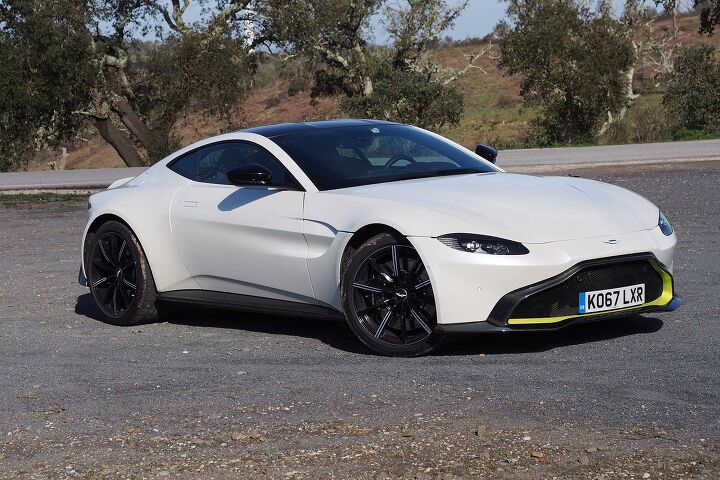
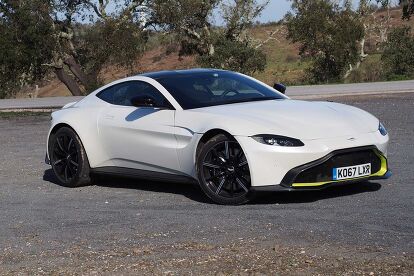


























































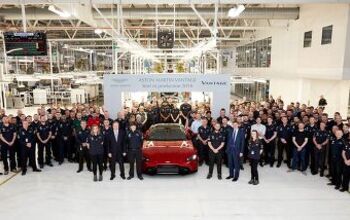
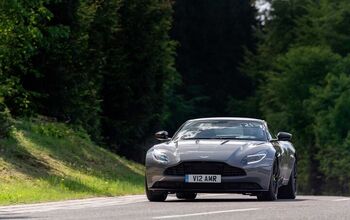


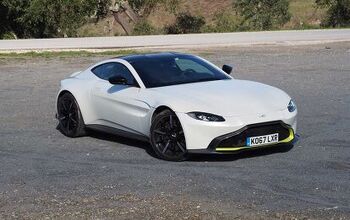










Comments
Join the conversation
Leather or not, that's not a very attractive dash for a vehicle in that segment. Maybe it might look better wearing something other than black. The safety neon splitter and rear diffuser treatment is tacky IMHO. Me thinks the classy DB11 is more suitable...